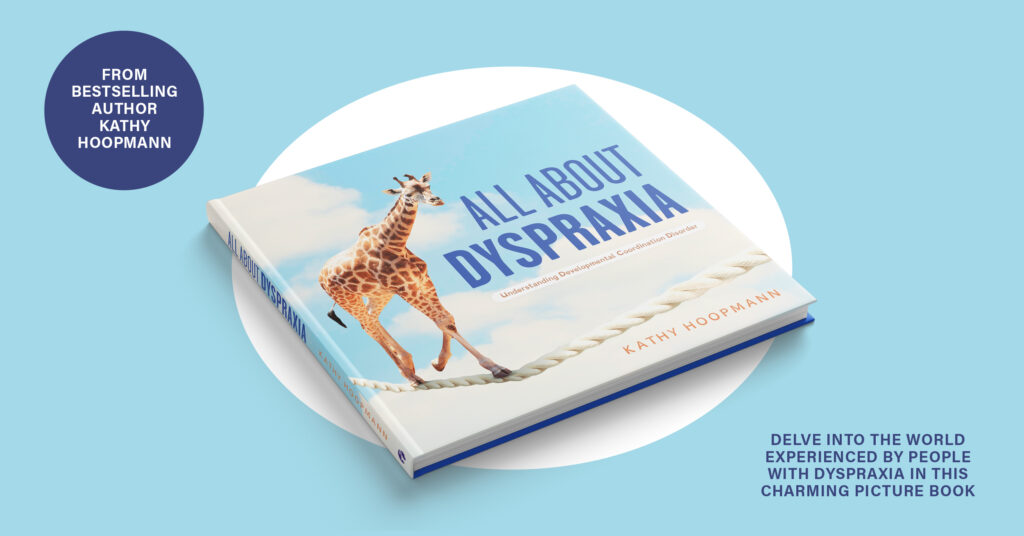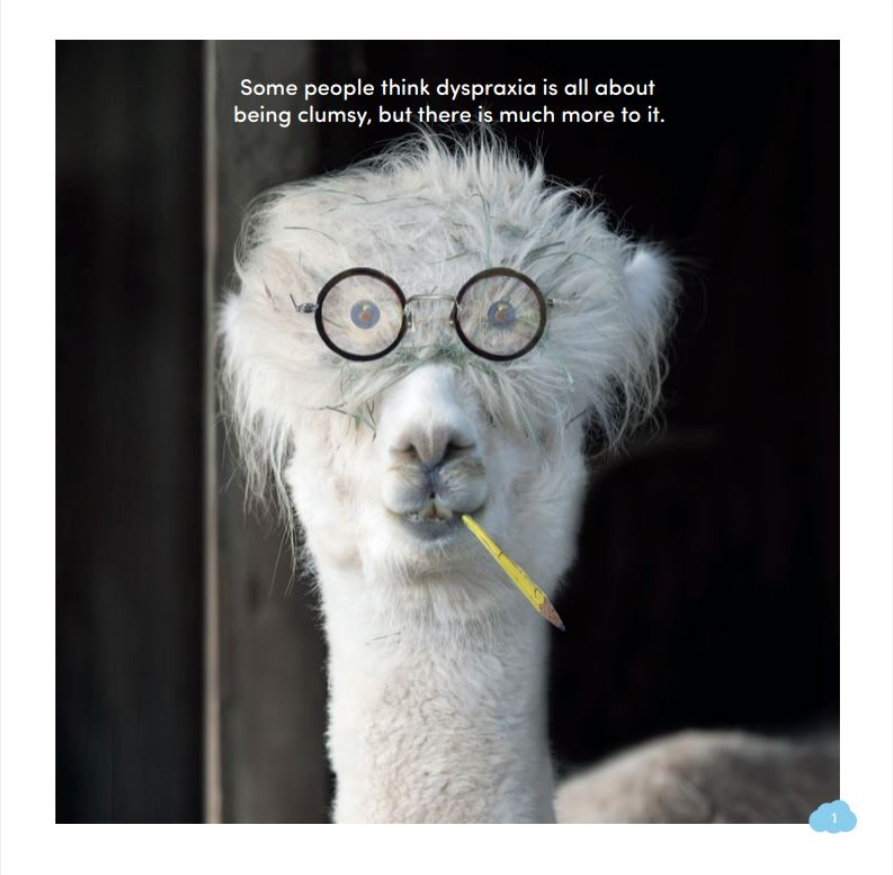
All About Dyspraxia
Award-winning author, Kathy Hoopmann, is best known for her photo illustrated books on Asperger Syndrome, ADHD and anxiety. In this blog, Kathy provides insight into her experiences meeting dyspraxic people, and shares how hearing their inspiring stories spurred her on to write her brilliant new book, All About Dyspraxia.
I have to admit that a book on dyspraxia was not on my agenda until I was approached by Jessica Kingsley Publishers, who asked me to consider writing it. It did not take much research for me to feel quite excited about the project. Dyspraxia is a diagnosis that affects many people and yet is so misunderstood. In essence, it is a neurological disorder that affects gross and fine motor coordination and may also affect speech, memory, the ability to pay attention, and time management.

In the past, dyspraxia has been called Childhood Motor Deficiency Syndrome, Clumsy Child Syndrome and Perceptual Motor Dysfunction, among other terms. The word ‘dyspraxia’ does not appear in the DSM5 where the condition is called Developmental Coordination Disorder (DCD) and often the terms are used interchangeably. Some countries have a preference for which term is used and generally in the US and the UK, dyspraxia is used, whereas in Australia, the preferred terminology is DCD.
Dyspraxia is frequently co-morbid with other conditions such as autism, Attention Deficit Hyperactivity Disorder and dyslexia, to name just a few. I spoke to specialists who outlined the symptoms and I visited an occupational therapist who showed me her beautiful workshop, surrounded by Australian bush and wildlife, where she helped strengthen and support kids to maximise their potential.

After my initial clinical research, I went straight to the people who knew all about dyspraxia the best; those with personal, lived-in experiences. The benefit of the internet is that there are no geographical boundaries to navigate and I soon found myself chatting with people with dyspraxia all over the world. They gave so freely of themselves and were open to sharing their highs and lows, strengths and weaknesses, hopes and dreams.
I first heard about dyspraxic hypermobility from a lady whose knees locked back like a curved banana causing her pain if she had to stand for long. A boy with a genius intellect, had muscle tone like wet spaghetti.
Another taught me about the frustration of simple things like tying shoes, making a bed and stepping across the small gap between the train and the station, as if her brain won’t let her do the everyday things she wants to do.
One person shared how she had to take her driving test eleven times before getting it.
A common theme was frustration in having a great intellect in a body that can’t keep up. Add to this, they had to try to survive in a society that did not recognize or support their needs, yet belittled them for struggling to perform, regardless of how hard they tried. All those eager children with bright inquisitive minds, all those adults with enormous potential, rejected before they could shine. Some of the stories were just so sad.

However, without exception, every person I spoke to did not look at the world with eyes of gloom. They pragmatically accepted their struggles as just a part of life, and got on with things. One boy was great at riding his bike and was excellent at handball, simply because he was prepared to put in hundreds of hours of practice, much more than his peers. Quite a few adults had achieved Master and Doctorate levels of education.
I listened to Ellie Madeira, a young dyspraxic girl, as she gave a TED talk and explained how her unique mind thinks: ‘Some people look outside of the box. But I’ve lost the box. I’m so far outside of the box, the box is gone.’ Daniel Radcliffe, who played the character Harry Potter, overcame his dyspraxic issues to become a successful actor. Jamie Lambert, a member of the band, ‘Collabro’ winner of Britain’s Got Talent shared that he struggled with dyspraxia in his childhood but that ‘it shouldn’t get in the way of achieving your goals.’
I spoke to parents who were fed up with a system that only saw their dyspraxic children as negatives to solve rather than fostering their unique skills and mindsets. These parents advocated in schools for more awareness and built like-minded communities to celebrate life in a nurturing and accepting environment. I came away at the end of my research with a sense of awe and respect for the perseverance and hope of those with dyspraxia and of those who loved them.
When it came to encapsulating the essence of dyspraxia into a book, I had an immediate road block. My other photo-books matched a specific animal to the condition: All Cats are on the Autism Spectrum; All Dogs Have ADHD, All Birds have Anxiety. However, I simply could not think of any animal known for its clumsiness and lack of coordination. I got around this dilemma by using animals generically. And so All About Dyspraxia was born.
It was a joy and honour to write this book. I hope you enjoy it.
‘All About Dyspraxia’ by Kathy Hoopmann is available now.
If you would like to read more articles like this and get the latest news and offers on our books about neurodiversity, why not join our mailing list? You may also be interested in our Facebook page or Twitter page.